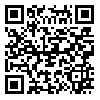Sat, Dec 27, 2025
[Archive]
Volume 8, Issue 1 (1-2018)
Iran J Ped Hematol Oncol 2018, 8(1): 37-47 |
Back to browse issues page
Download citation:
BibTeX | RIS | EndNote | Medlars | ProCite | Reference Manager | RefWorks
Send citation to:



BibTeX | RIS | EndNote | Medlars | ProCite | Reference Manager | RefWorks
Send citation to:
Firouzi M, Yazdanmehr R, Eliasy H, Birjandi M, Goudarzi A, Almasian M et al . The prevalence of the ABO hemolytic disease of the newborn and its complications in an Iranian population. Iran J Ped Hematol Oncol 2018; 8 (1) :37-47
URL: http://ijpho.ssu.ac.ir/article-1-311-en.html
URL: http://ijpho.ssu.ac.ir/article-1-311-en.html
Majid Firouzi 
 , Rana Yazdanmehr
, Rana Yazdanmehr 
 , Hosein Eliasy
, Hosein Eliasy 
 , Mehdi Birjandi
, Mehdi Birjandi 
 , Amin Goudarzi
, Amin Goudarzi 
 , Mohammad Almasian
, Mohammad Almasian 
 , Ali Asghar Kiani *
, Ali Asghar Kiani * 


 , Rana Yazdanmehr
, Rana Yazdanmehr 
 , Hosein Eliasy
, Hosein Eliasy 
 , Mehdi Birjandi
, Mehdi Birjandi 
 , Amin Goudarzi
, Amin Goudarzi 
 , Mohammad Almasian
, Mohammad Almasian 
 , Ali Asghar Kiani *
, Ali Asghar Kiani * 

Department of Hematology and Blood Transfusion,School of Allied Medical Sciences, Lorestan University of Medical Sciences, Khorramabad, Iran
Abstract: (5122 Views)
Background: ABO incompatibility is the most common cause of immune hemolytic disease of the newborn (HDN) and in most cases is not dangerous. The present study aimed to determine the prevalence of ABO-HDN and its effects on neonatal blood parameters in a population of patients referred to some training hospitals in Iran.
Materials and methods: In This cross-sectional study, All newborns (a total of 765 infants) whose medical records showed that they suffered from anemia or jaundice and were hospitalized in the training hospitals of Khorramabad, Iran, were evaluated. The information recorded in their medical records included age, gender, blood group, hemoglobin and bilirubin levels, reticulocyte count, platelet count, and maternal age. Data were analyzed using SPSS and statistical tests, such as chi-squared, independent t-test, and the Mann-Whitney test.
Results: Out of 765 newborns with anemia or jaundice, 293 infants (38.3%) had HDN, 78 (10.2%) of whom suffered from non-immune HDN. The rest, i.e. 215 neonates (28.1%), suffered from immune HDN. Among the neonates with immune HDN, 29 infants (3.8%) had Rh-HDN, and 186 newborns (24.3%) had ABO-HDN. Among the 186 newborns with ABO-HDN, 95 cases (13%) had blood group A and 84 cases (11.5%) had blood group B. No significant relationship was found between A and B blood groups in the newborns with the occurrence of ABO-HDN (p=0.1). There was a significant difference between neonates with ABO and those without ABO in terms of bilirubin (p= 0.001), hemoglobin (p=0.003), and reticulocyte (p=0.036) counts. A significant relationship between platelet count and the occurrence of ABO-HDN was not found (p= 0.558).
Conclusion: The results showed that a large percentage of neonates are affected by ABO-HDN and provisions should be made to avoid possible complications.
Materials and methods: In This cross-sectional study, All newborns (a total of 765 infants) whose medical records showed that they suffered from anemia or jaundice and were hospitalized in the training hospitals of Khorramabad, Iran, were evaluated. The information recorded in their medical records included age, gender, blood group, hemoglobin and bilirubin levels, reticulocyte count, platelet count, and maternal age. Data were analyzed using SPSS and statistical tests, such as chi-squared, independent t-test, and the Mann-Whitney test.
Results: Out of 765 newborns with anemia or jaundice, 293 infants (38.3%) had HDN, 78 (10.2%) of whom suffered from non-immune HDN. The rest, i.e. 215 neonates (28.1%), suffered from immune HDN. Among the neonates with immune HDN, 29 infants (3.8%) had Rh-HDN, and 186 newborns (24.3%) had ABO-HDN. Among the 186 newborns with ABO-HDN, 95 cases (13%) had blood group A and 84 cases (11.5%) had blood group B. No significant relationship was found between A and B blood groups in the newborns with the occurrence of ABO-HDN (p=0.1). There was a significant difference between neonates with ABO and those without ABO in terms of bilirubin (p= 0.001), hemoglobin (p=0.003), and reticulocyte (p=0.036) counts. A significant relationship between platelet count and the occurrence of ABO-HDN was not found (p= 0.558).
Conclusion: The results showed that a large percentage of neonates are affected by ABO-HDN and provisions should be made to avoid possible complications.
Type of Study: Research |
Subject:
Heart
Received: 2017/06/17 | Accepted: 2017/12/7 | Published: 2017/12/11
Received: 2017/06/17 | Accepted: 2017/12/7 | Published: 2017/12/11
Send email to the article author
| Rights and permissions | |
 |
This work is licensed under a Creative Commons Attribution-NonCommercial 4.0 International License. |

